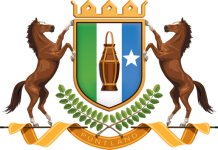The Bank of England 10 pound note is commonly referred to as a “tenner.” Old versions, such as the one pictured above, feature Charles Darwin, who is recognized for his theory of evolution and natural selection. The paper note with Charles Darwin was issued in 2000 and withdrawn from circulation in March 2018. Although the coin had not been minted or circulated for a long time, prices were still sometimes given in guineas. A price of 58 guineas was, in fact, £60 18s 0d, which sounds more than “58 guineas”. The pound has only been divided into 100 pence since 1971.
The first sterling notes were issued by the Bank of England shortly after its foundation in 1694. Denominations were initially handwritten on the notes at the time of issue. From 1745, the notes were printed in denominations between £20 and £1,000, with any odd shillings added by hand.
As a result of equitable trade (and rather less equitable piracy), the Spanish milled dollar became the most common coin within the English how to use nft: 7 ways to use non-fungible tokens nfts with examples colonies. In 1707, the kingdoms of England and Scotland merged into the Kingdom of Great Britain. In accordance with the Treaty of Union, the currency of Great Britain was sterling, with the pound Scots soon being replaced by sterling at the pegged value. Historically almost every British coin had a widely recognised nickname, such as “tanner” for the sixpence and “bob” for the shilling.36 Since decimalisation these have mostly fallen out of use except as parts of proverbs. The 10 pence (10p) coin is round and silver, with an image of Queen Elizabeth II or King Charles on the front and a part of the Royal Shield on the back.
Fifty Pence Coin
- Alternatively, you can exchange money at most bank branches and post offices.
- In the late 19th and early 20th centuries, many countries tied the value of their currencies to the price of gold.
- Notes are available in 5, 10, 20, and 50-pound denominations, and each one has its own distinct color.
- Lastly, some bigger stores in Northern Ireland may accept the euro as a concession to visitors from the south, but they are not legally required to do so.
- The reverse side has a profile of Jane Austen, a “Pride and Prejudice” quote, an illustration of Elizabeth Bennet, and an image of Godmersham Park.
£10 notes were added in 1759, followed by £5 in 1793 and £1 and £2 in 1797. The lowest two denominations were withdrawn after the end of the Napoleonic wars. In 1855, the notes were converted to being entirely printed, with denominations of £5, the best smfx 3d lamp 2021 £10, £20, £50, £100, £200, £300, £500 and £1,000 issued.
GBP to USD: Convert British Pounds to US Dollars
All Sterling notes were handwritten until 1855, when the bank began to print whole notes. In the early 20th century, more countries began to tie their currencies to gold. A gold standard was created, which allowed conversion between different countries’ currencies and revolutionized trading and the international economy. Great Britain officially adopted the gold standard in 1816, though it had been using the system since 1670.
Which currencies can I convert with this currency converter?
From 1844, new banks were excluded from issuing notes in England and Wales but not in Scotland and Ireland. Consequently, the number of private banknotes dwindled in England and Wales but proliferated in Scotland and Ireland. With the extension of sterling to Ireland in 1825, the Bank of Ireland began issuing sterling notes, later followed by other Irish banks. These notes included the unusual denominations of 30/– and £3. The highest denomination issued by the Irish banks was £100.
In the run-up to decimalisation, the halfpenny and half-crown were demonetised in 1969. The early pennies were struck from fine silver (as pure as was available). They add hidden markups to their exchange rates – charging you more without your knowledge. British Pound Notes and the Gold StandardThe first paper notes were introduced in 1694, with their legal basis being switched from silver to gold. The Bank of England, one of the first central banks in the world, was established a year later, in 1695.
In 1816, a new silver coinage was introduced in denominations of 6d, 1/–, 2/6d (half-crown) and 5/– (crown). It was followed by a new gold coinage in 1817 consisting of 10/– and £1 coins, known as the half sovereign and sovereign. The silver 4d coin was reintroduced in 1836, followed by the 3d in 1838, with the 4d coin issued only for colonial use after 1855. In 1848, the 2/– florin was introduced, followed by the short-lived double florin in 1887.
While Visa and Mastercard cards are widely accepted everywhere, it’s worth remembering that American Express, Discover, and Diners Club cards are not so readily accepted for POS payments (especially outside London). If you have either of these cards, you should carry an alternative form of payment as well. You can use contactless Visa, Mastercard, and American Express cards to pay for public transport in London, and payments in nearly all shops and restaurants. In addition to search results for coingecko algo these internal (national) criteria, the UK would have to meet the European Union’s economic convergence criteria (Maastricht criteria) before being allowed to adopt the euro.




